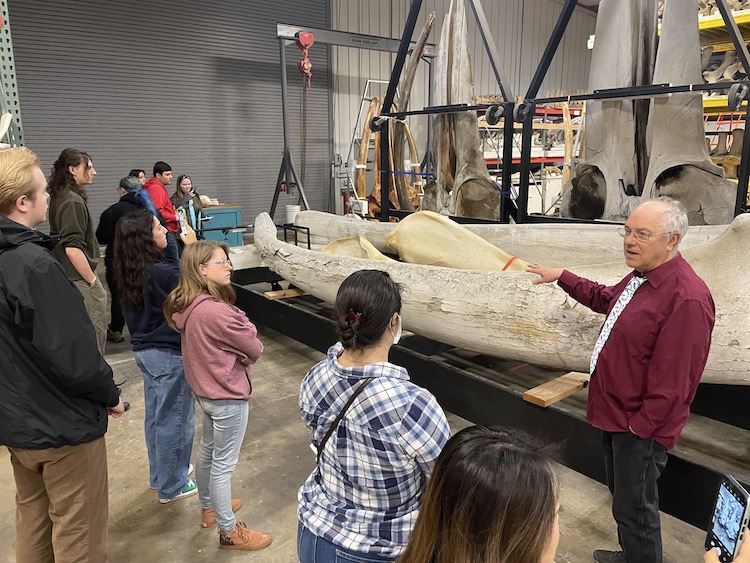Learn more about SMSC
- August 9, 2023
- July 27, 2023
- July 13, 2023
- May 8, 2023
- April 4, 2023

Last week undergraduates in George Mason University’s Smithsonian-Mason School of Conservation (SMSC) semester-away program had the opportunity to take a behind-the-scenes tour of the National Museum of Natural History’s Museum Support Center in Suitland, Maryland.
The students were introduced to the archive of rare whale specimens in the Museum Support Center by the Smithsonian’s long-time cetacean specialist John Ososky.
Ososky showed the group the very first Rice’s whale ever described, a critically endangered species of whale identified for the first time in 2020, as well as specimens of bowhead whales, killer whales, narwhal tusks, North Atlantic right whales, and rare deep-diving beaked whales, among others.
Also accompanying the students on the tour was Mason wildlife endocrinologist Kathleen Hunt who described her current whale research, including how hormone analysis of museum specimens can help researchers understand the problems affecting modern-day populations, and what can done about it.
Ososky also spoke to the students about how valuable their archived specimen collections can be in identifying new species, species that have gone unrecognized until recently, and in determining causes of mortality in endangered species.
Students in SMSC’s Endangered Species Conservation semester-away program spend 16 weeks living on site at the Smithsonian Conservation Biology Institute in Front Royal, Virginia. During this time, the undergraduates have the opportunity to practice conservation firsthand with experts from the Smithsonian Institution, Mason, and wildlife protection agencies around the world.
